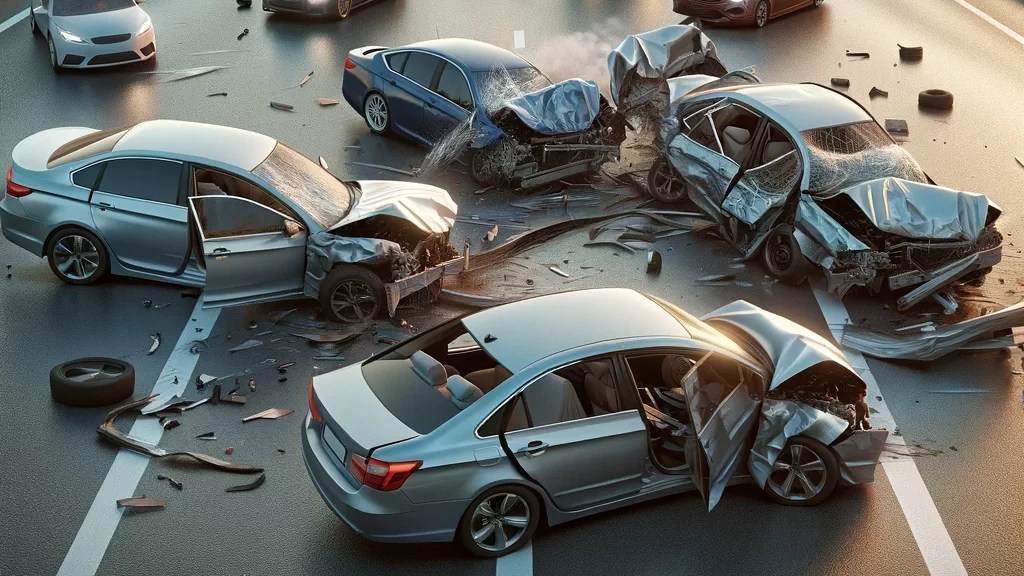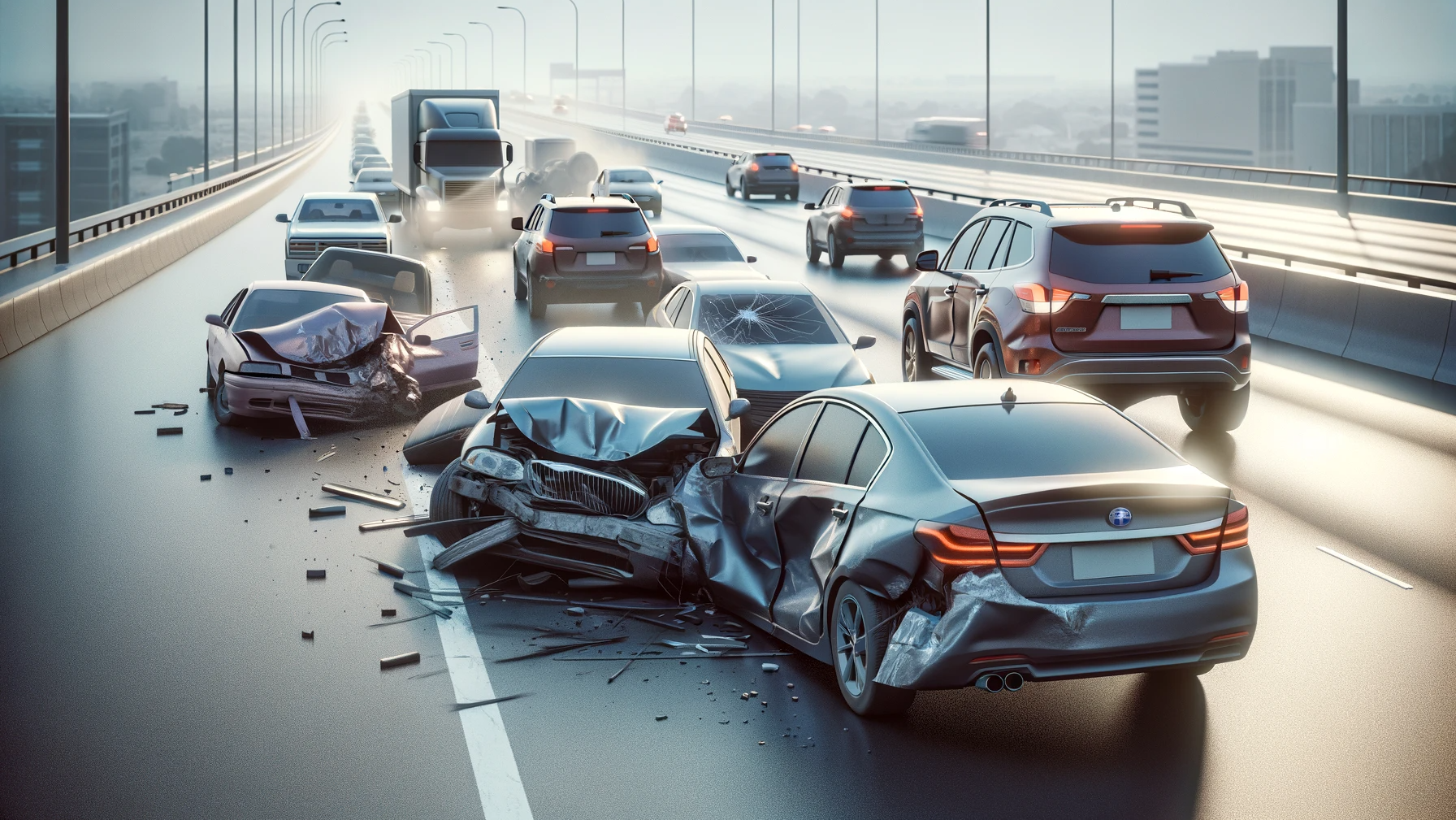Freeway Accidents in Texas: Legal Guide to Determining Fault
January 13, 2024

When it comes to freeway accidents in Texas, determining fault is a critical aspect of the process. Whether you are filing an insurance claim or considering legal action, understanding the guidelines for fault determination is essential. In Texas, the legal system follows a “modified comparative fault” approach, which means that you may seek compensation if you are found to be less than 51% responsible for the accident.
Determining fault involves considering various factors, such as police reports, eyewitness testimonies, physical evidence, and photographic or video evidence. Following traffic laws and being aware of negligence and comparative negligence concepts are important in understanding fault determination in a Texas car accident. To ensure your rights are protected and to navigate through the complexities of the process, it is advisable to seek legal representation.
- Key Takeaways
- Factors Considered in Determining Fault in Texas Car Accidents
- Proving Fault in a Car Accident: Elements of Negligence and Gathering Evidence
- Evidence of Fault in a Car Accident and Recovering Compensation
- Proving Fault in a Car Accident: What to do If the At-Fault Driver Fled the Scene
- Importance of Legal Representation in Proving Fault and Recovering Compensation
Key Takeaways
- Fault determination is crucial in freeway accidents in Texas for insurance claims and potential legal action.
- Texas follows a “modified comparative fault” system, where compensation can be sought if the individual is less than 51% responsible for the accident.
- Factors considered in determining fault include police reports, eyewitness testimonies, physical evidence, and photographic or video evidence.
- Adhering to traffic laws and understanding negligence and comparative negligence concepts are important in determining fault in a Texas car accident.
- Seeking legal representation is essential to protect your rights and navigate the complexities of the fault determination process.
Factors Considered in Determining Fault in Texas Car Accidents

When determining fault in Texas car accidents, several factors are considered. One of the key factors is negligence, which refers to the failure to exercise reasonable care while driving. It is important to establish whether one or more parties involved in the accident acted negligently, and to what extent.
Another factor that plays a crucial role in determining fault is comparative negligence. Texas follows a comparative negligence system, which means that fault is assigned proportionally among the parties involved. This system takes into account each party’s degree of responsibility for the accident and adjusts the amount of compensation accordingly.
Evidence of impairment, such as alcohol or drug use, can also significantly impact the fault determination process. If a driver is found to be impaired at the time of the accident, it can greatly affect their share of fault and potential liability.
Common scenarios in which fault is often assigned include rear-end collisions, failure to yield, left-hand turns, and speeding. These types of incidents have established norms and rules of the road, making it easier to determine which party was at fault.
While insurance companies play a role in determining fault, it is important to note that their perspective may not always align with the injured party’s viewpoint. It is advisable to seek legal representation to protect your rights, navigate the complexities of the process, and ensure a fair determination of fault in Texas car accidents.
Throughout this section, we have explored the factors considered in determining fault in Texas car accidents. From negligence and comparative negligence to evidence of impairment, understanding these factors is vital when seeking compensation and pursuing legal action. In the next section, we will delve into the elements of negligence and how gathering evidence can support your claim.
Proving Fault in a Car Accident: Elements of Negligence and Gathering Evidence

In order to prove fault in a car accident, it is essential to establish the four key elements of negligence. These elements include the duty of care, breach of duty, causation, and damages.
Let’s take a closer look at each of these elements:
- Duty of Care: This refers to the responsibility that every driver has to operate their vehicle safely and follow traffic laws.
- Breach of Duty: A breach of duty occurs when a driver fails to meet the expected standard of care, such as ignoring traffic signals or driving recklessly.
- Causation: It is necessary to establish a direct link between the breach of duty and the injuries or damages suffered as a result of the car accident.
- Damages: In order to prove fault, it is crucial to provide evidence of the actual damages incurred, such as medical bills, property damage, and lost wages.
To support a compensation claim and prove fault, gathering evidence is of utmost importance. Here are some types of evidence that can be crucial in establishing fault:
- Photographs and Videos: Visual evidence of the accident scene, damages to vehicles, road conditions, and any contributing factors can help recreate the events leading up to the accident.
- Eyewitness Testimonies: Statements from individuals who witnessed the accident can provide valuable insights into what occurred and who may be at fault.
- Expert Witnesses: Experts in accident reconstruction, medical professionals, or engineers can provide professional opinions and analyses to support your claim.
- Police Reports: Official police reports contain valuable information and statements gathered at the scene that can help establish fault.
By presenting a strong case with supporting evidence, you can significantly increase your chances of proving fault and negotiating fair compensation with insurance companies. Remember, in Texas, fault is shared under an at-fault system, so understanding the elements of negligence and gathering ample evidence is essential to protect your rights and seek rightful compensation.
Evidence of Fault in a Car Accident and Recovering Compensation

When it comes to determining fault in a car accident, it’s essential to gather evidence that supports your claim. While establishing fault through negligence is crucial, other forms of evidence can also play a significant role in determining liability. Here are some types of evidence that can help strengthen your case:
- Photos and Videos: Capturing images and videos of the accident scene can provide critical visual evidence. This evidence can depict the position of the vehicles, road conditions, traffic signs or signals, and other factors that contribute to fault determination. These visual records can be powerful evidence in supporting your claim for compensation.
- Eye-witness Testimonies: Eyewitnesses can provide valuable accounts of how the accident occurred. Their testimonies can help establish fault and corroborate your version of events. Eyewitness statements are often considered credible evidence, as they offer unbiased perspectives from individuals who observed the accident firsthand.
- Expert Witnesses: In some cases, expert witnesses can be called upon to provide their professional opinions on matters relating to fault. For example, accident reconstruction experts can analyze the evidence and provide insights into the sequence of events leading to the accident. Their expert opinions can carry weight in court and bolster your case.
Once fault is determined, you can take steps to recover compensation for the damages you’ve suffered. This compensation may include:
- Property Damage: Reimbursement for the repairs or replacement of your vehicle.
- Medical Costs: Compensation for your medical expenses, including hospital bills, surgeries, medications, rehabilitation, and ongoing treatment.
- Lost Wages: Recovery of income lost due to time off work while recovering from your injuries.
- Pain and Suffering: Compensation for the physical pain, emotional distress, and diminished quality of life you’ve experienced as a result of the accident.
- Other Damages: Depending on the circumstances of your case, you may also be eligible for compensation for future medical expenses, loss of earning capacity, and other related losses.
Recovering compensation involves navigating through insurance claims or pursuing a personal injury lawsuit. However, it’s important to note that the amount of compensation you receive may be affected if you are found partially at fault for the accident. Texas follows a modified comparative fault system, which means the percentage of fault assigned to each party can impact the amount of compensation awarded.
Securing legal representation is crucial during this process to protect your rights and ensure you receive the maximum compensation you deserve. A skilled car accident lawyer can guide you through the legal complexities, negotiate with insurance companies on your behalf, and present a strong case to support your claim.
| Types of Evidence | Importance |
|---|---|
| Photos and Videos | Provide visual evidence of the accident scene, road conditions, and contributing factors. |
| Eye-witness Testimonies | Corroborate your version of events and offer unbiased perspectives. |
| Expert Witnesses | Provide professional opinions on fault determination based on their expertise. |
Proving Fault in a Car Accident: What to do If the At-Fault Driver Fled the Scene
When you’re involved in a car accident and the at-fault driver flees the scene, proving fault can be a challenge. However, there are steps you can take to still obtain compensation for your damages. One important resource in this situation is your uninsured/underinsured motorist coverage, which is typically included in auto insurance policies.
Just like in accidents where the parties are identified, gathering evidence is crucial in proving fault. Begin by filing a police report as soon as possible, providing all details you can remember about the accident. Take photographs or videos of the accident scene, capturing any visible damage to your vehicle and the surrounding area. These pieces of evidence can be invaluable in establishing fault.
Witness testimonies can also play a significant role in proving fault. If there were any witnesses to the accident, gather their contact information and ask if they would be willing to provide a statement about what they saw. Additionally, consider hiring expert witnesses who can provide their professional opinion on the accident and help strengthen your case.
| Evidence | Importance |
|---|---|
| Police Reports | Official documentation of the accident, which can be helpful in proving fault. |
| Photographs/Videos | Visual evidence that showcases the extent of damage and the accident scene. |
| Witness Testimonies | Firsthand accounts of the accident from individuals who saw what happened. |
| Expert Witnesses | Opinions and analyses from professionals who can provide technical insights. |
Seeking legal assistance from a car accident lawyer is crucial in navigating the complexities of proving fault in a hit-and-run accident. A skilled attorney can guide you through the process, help gather and present evidence, and advocate for your rights. They can also assist in pursuing your uninsured/underinsured motorist coverage and ensuring you receive the compensation you deserve.
Importance of Legal Representation in Proving Fault and Recovering Compensation
When it comes to proving fault and recovering compensation after a car accident, seeking legal representation is of utmost importance. A skilled Texas personal injury lawyer can provide the expertise needed to navigate the complexities of the legal process.
One of the key roles of a personal injury lawyer is to conduct a thorough investigation into the accident. They will gather evidence such as police reports, eyewitness testimonies, and any available photographic or video evidence. This evidence will be crucial in establishing fault and building a strong case.
In addition to gathering evidence, a personal injury lawyer can negotiate with insurance companies on behalf of the injured party. Insurance companies often try to minimize or deny compensation, but a lawyer can advocate for fair and just compensation for damages incurred, including property damage, medical costs, lost wages, pain and suffering, and other related losses.
Furthermore, if a fair settlement cannot be reached, a personal injury lawyer can represent the injured party in court. They will present the evidence, argue the case, and fight for the injured party’s rights. Their expertise and experience in trial litigation can make a significant difference in the outcome.
Ultimately, contacting a personal injury lawyer as soon as possible after a car accident is crucial. They will work tirelessly to protect the injured party’s rights, prove fault, and recover the compensation they deserve, providing peace of mind during a challenging time.